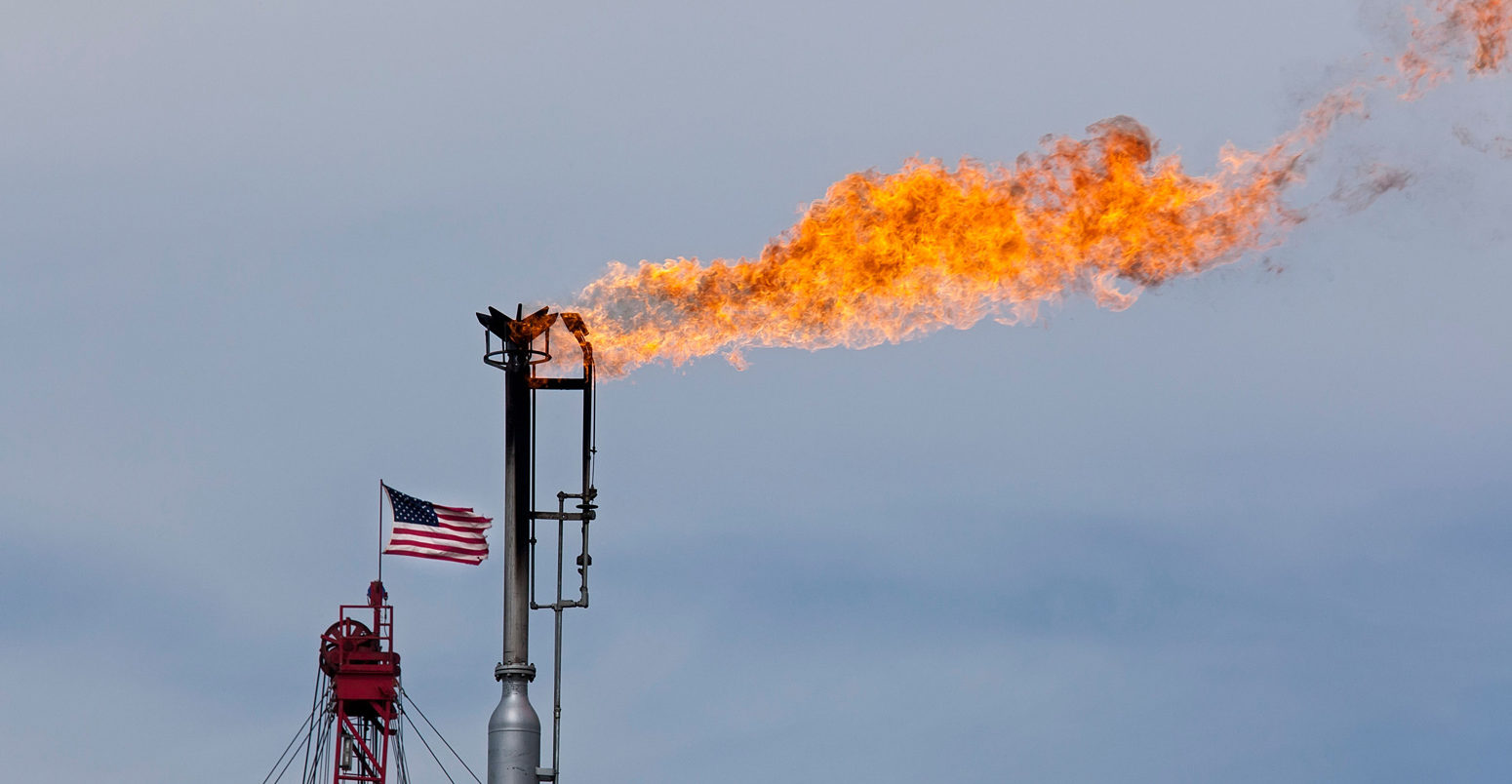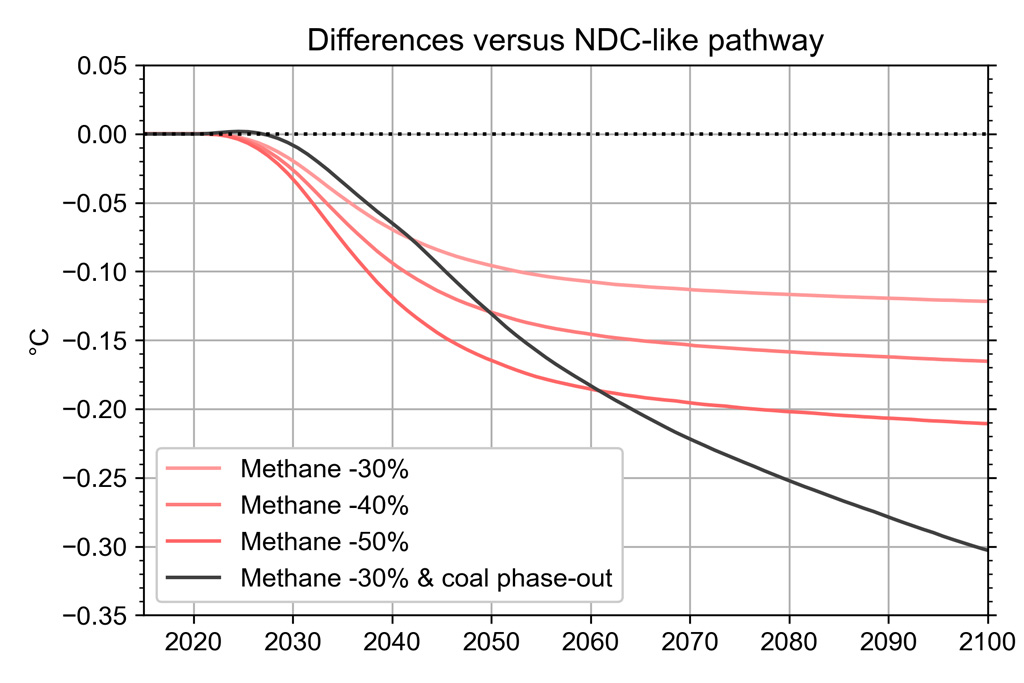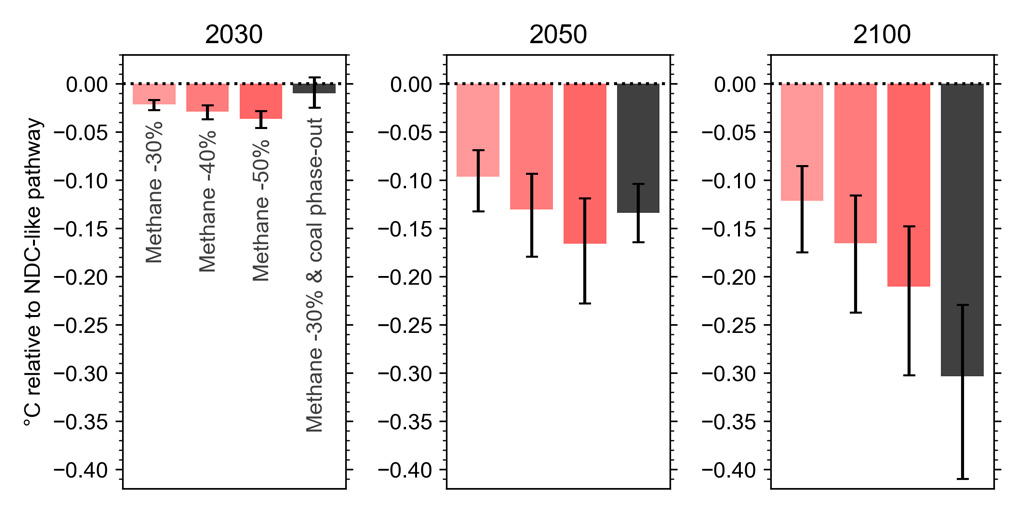
Guest post: The Global Methane Pledge needs to go further to help limit warming to 1.5C

Guest authors
11.02.21
Guest authors
02.11.2021 | 2:57pmAt the COP26 summit in Glasgow today, US president Joe Biden and European Commission president Ursula von der Leyen officially launched the Global Methane Pledge.
Announced in September, the pledge asks countries to cut their methane emissions by 30% over 2020-30 and agree to stronger reporting standards. In his speech, Biden said “nine countries had signed on” in September, but “today, it’s over 80 and approaching 100 countries”. (US climate envoy John Kerry later clarified that “we’re up to 105”.)
As well as the US and EU nations, these include Indonesia, Canada, Brazil and the UK. In total, the number of countries signed up represents “nearly half the global methane emissions” and “70% of global GDP”, Biden noted.
According to the EU and US, delivering on the pledge “would reduce warming by at least 0.2C by 2050”. But can it deliver on this promise?
Global mitigation efforts have rightly focused on emissions of carbon dioxide (CO2). To prevent further warming, global CO2 emissions need to reach net-zero as quickly as possible. However, until net-zero CO2 is achieved we will see continued warming and increasingly devastating extreme weather.
As global warming is increasingly becoming a lived reality for the global population, attention is focusing on what the world can do to rapidly change the direction of travel and to limit global warming to as close to 1.5C as possible.
Using simple climate models known as “emulators”, we show that cutting methane can have a huge impact on limiting near-term warming, but global methane reductions of around 50% will likely be needed to realise the 0.2C saving.
Emissions cuts
Methane is a potent greenhouse gas and the second biggest contributor to human-caused global warming after CO2. Methane emissions from agriculture, fossil fuel leaks and waste have contributed 0.5C of global warming to date, compared to CO2’s contribution of 0.8C.
Addressing methane emissions has for long been seen as low-hanging fruit for climate policy. Reducing methane lowers its atmospheric concentration immediately, it also leads to lower levels of surface ozone, bringing both additional climate benefits and improved air quality.
Methane’s short atmospheric lifetime of around 10 years means that cutting emissions can reduce its temperature contribution almost immediately. This is in contrast to CO2, where zero emissions only result in no further warming – underpinning the scientific basis of net-zero targets – but not in a reduction of it.
So how effective can methane cuts be for tackling climate change?
We ran model simulations of different levels of emissions cuts and compared them to the SSP2-4.5 pathway, with a small modification to keep baseline methane emissions constant into the future. As methane emissions remain within 3% of today’s levels until 2040 in SSP2-4.5, this forms an appropriate baseline assumption for the medium term. Additionally, SSP2-4.5 is chosen as it is the scenario that is closest to the combined impact of current emissions pledges by individual countries – known as Nationally Determined Contributions (NDCs) – according to a recent UNFCCC report.
In our methane mitigation scenarios, we applied global methane reductions of 30%, 40% and 50% in 2030, relative to 2020, and kept them at that level into the future. We then applied straight-line methane reductions between 2020 and 2030 to transition towards the 2030 scenarios.
For comparison, we also simulated the impact of another COP26 priority – phasing out coal power. The coal phaseout scenario estimates the present-day global emissions factors for coal (including for air pollutants) and quantifies the level of global emissions attributable to coal in 2040 and future years by analysing primary energy supply from coal projections for SSP2-4.5 in the IIASA SSP Scenario Database. We then subtracted these values from global emissions from all future years and also implemented a linear decline in emissions from the 2020 baseline to the 2040 projections. The coal phase-out scenario was applied in addition to the 30% methane reduction.
These emissions scenarios were all run using “FaIR”, a climate model emulator, which estimates the impact on global average surface temperature. The emulator accounts for the co-benefits for climate from reductions in surface ozone and CO2.
The output is shown in the figure below, which includes the different levels of methane emission cuts (red lines) and the additional cooling benefit of phasing out coal on top of a 30% methane reduction (black line) out to 2100.

The three charts below show snapshots of the impact that these emissions cuts have on temperatures in 2030 (left), 2050 (middle) and 2100 (right). The black bar shows the temperature reductions if both a 30% methane reduction and coal phase out is enacted.

Benefits for society
It is clear from the figures that methane cuts have the largest effect on near-term temperatures and they should be a vital part of efforts to limit warming to as low as possible.
The figures also indicate that methane reductions of around 50% – rather than 30% – will likely be needed to realise the 0.2C of avoided warming aimed for in the pledge. (In addition, our scenarios refer to global emissions and so are more ambitious than the pledge as it stands.)
It should be noted that we show the benefits of methane mitigation alone. Cost-effective methane mitigation options may also reduce CO2 emissions as a co-benefit, further increasing the impact.
These figures show that methane cuts bring near-term benefits, but level off over time. However, when combined with a coal phase-out, long-term climate and air quality benefits can be achieved. A very rapid coal phase-out is crucial for meeting long-term temperature goals, but has a short-term warming effect from less air pollution. Combined with both fossil and agricultural methane reductions, this effect is limited.
These results very much support the headline assessment (pdf) in the first part of the Intergovernmental Panel on Climate Change’s (IPCC) sixth assessment report (AR6) – published in August this year – which concluded that “strong, rapid and sustained reductions in [methane] emissions would…limit the warming effect resulting from declining aerosol pollution and would improve air quality”.
In the longer-term, the coal phase-out pledge is the more significant of the COP aims in terms of the surface temperature benefit. Both measures bring huge added benefits for society and nature. In particular, they would all lead to less air pollution and improvements in human health.
Preventing leaks from fossil fuel infrastructure should be good business practice as should preventing biodegradable waste from being sent to landfill. Healthier diets, better animal husbandry and farming practises are thornier issues to deal with, but still important for methane reductions at the necessary scale to keep 1.5C firmly on the table.
The data and code used in this analysis is available here.
Update: This article was updated on 05/11/2021 to clarify that the analysis does take into account the co-benefits of methane reductions for surface ozone and CO2.
-
Guest post: The Global Methane Pledge needs to go further to help limit warming to 1.5C

